Certainly brilliant. But also maybe a little bit nuts...I need to remember this analogy….brilliant

 |
As a way to introduce our brass coins to the community, we will raffle off a free coin during the month of August. Follow link ABOVE for instructions for entering. |
 |
Certainly brilliant. But also maybe a little bit nuts...I need to remember this analogy….brilliant

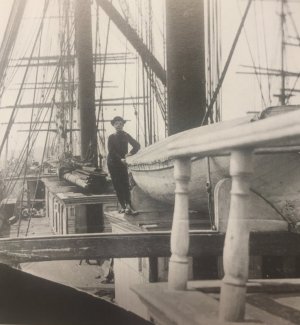



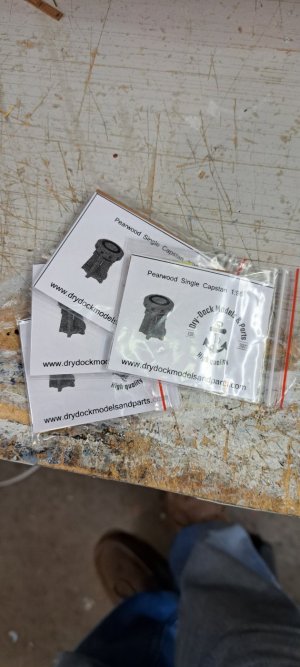
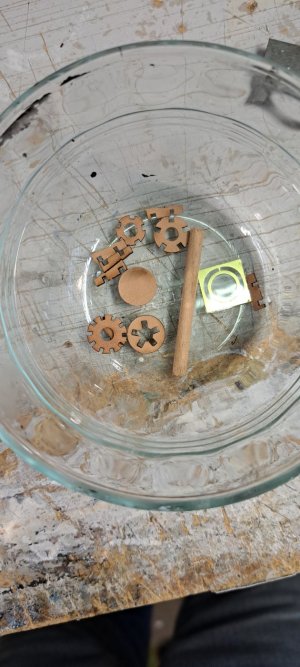
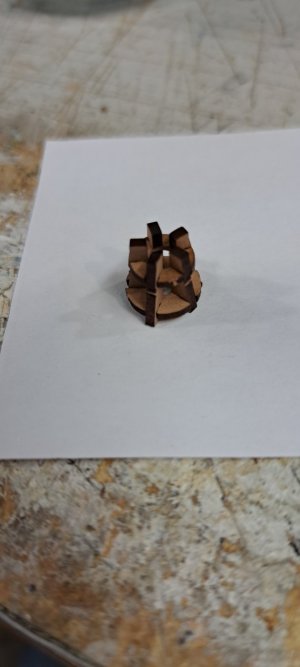
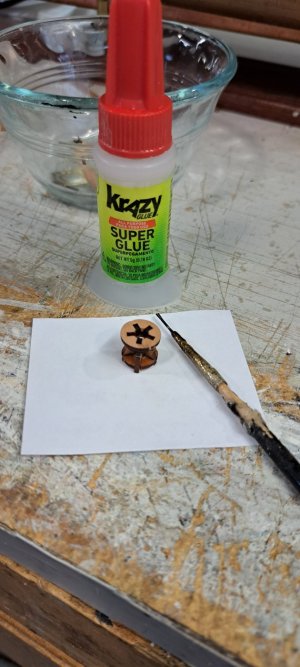
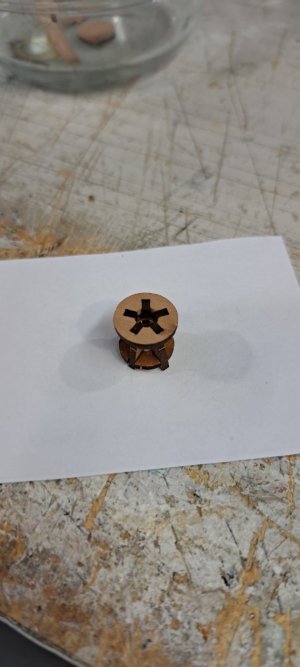
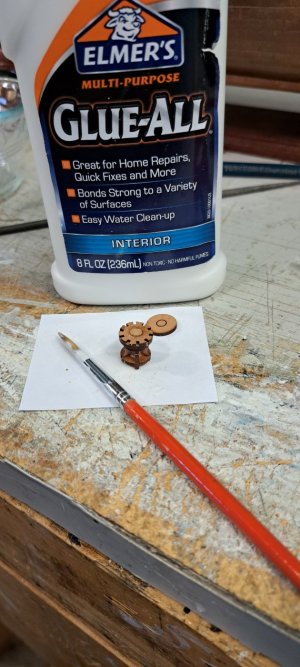
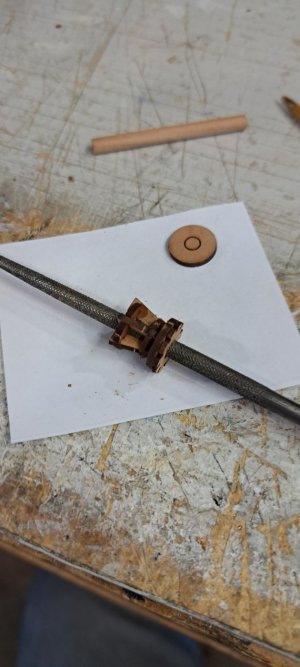
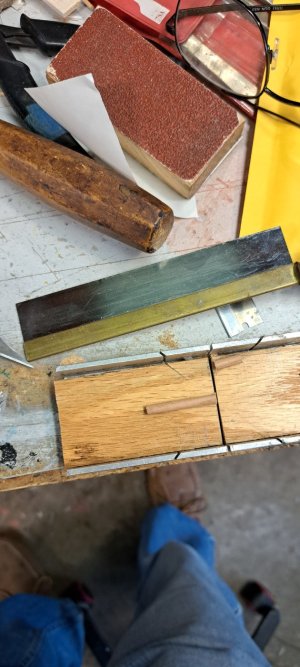
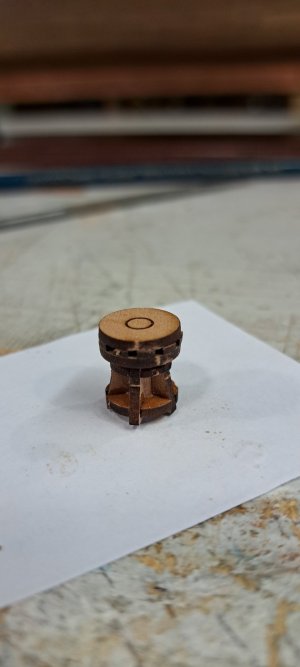 PS. I dry assembled the core capstan assembly, then glued it together using the two tined fork pictured to introduce the CA into the assembled joints. Capillary action sucks the glue into place cleanly. you can make one of these applicators by cutting off the end of a sewing needle eye and gluing the sharp end into a dowel for a handle.
PS. I dry assembled the core capstan assembly, then glued it together using the two tined fork pictured to introduce the CA into the assembled joints. Capillary action sucks the glue into place cleanly. you can make one of these applicators by cutting off the end of a sewing needle eye and gluing the sharp end into a dowel for a handle.


Good morning Peter. You are owning this - lovely. Cheers GrantMy take on skids on the main deck house. I found a nice scrap of some unusually fine-grained oak. So, I used that, finished with some thinned amber shellac. The boats are again just temporarily in place.View attachment 485323View attachment 485324View attachment 485325View attachment 485326View attachment 485327View attachment 485328View attachment 485329

Bill, for the record, I have no objection to reposting any image I've already shared. Just remember, Mike (Michael Mjelde) gets credit for pics or documents he's generously shared with us. You're correct regarding the main house abaft the foremast. Planking in the aft is definitely lateral. From shadows, they might even overlap, like strakes. This area was modified to add 4 larger folding doors to accomodate a later addition of an auxiliary engine. We can't tell for sure if the entire back was redone or not. Meanwhile, a closer look at the newer cabin boy's house seems to show smoother joinery of wider vertical panels below, with cabinet style molding on top, keeping consistent with the same style seen on her forward cabin. Note too: boat skids on top of the forward cabin all have a gentle curve on their bottoms and don't project too far from ornate ceiling molding.I reposted the picture that Rich previously posted. I hope that's ok. What a great picture. There is so much to see. Look at all of the detail on the deck houses. The crown molding detail is layered. Also, I noticed that the ship lapping only goes a little more than half way up. Even the hand rail at the front of the picture has great detail. I may be mistaken, but does the deck planking along the deck house run laterally from side to side?
Thanks for the great picture.
Bill
View attachment 485307

Peter,Got with my IT help co. (My Computer Works, VERY good at pulling fat from the fire! I highly recommend!) Pictures of skylights as promised.View attachment 484983View attachment 484984View attachment 484985View attachment 484986 boats just set in place temporarily. Boat skids next.

Well in a similar image there is a boat upside down on the main cabin roof as shown in this image. I'm assuming, this type of storage...needed only simple boat skids, unlike the upright boats.The boats in the photo of Glory of the Seas stored upright with covers makes more sense to me than the upside down ones usually shown
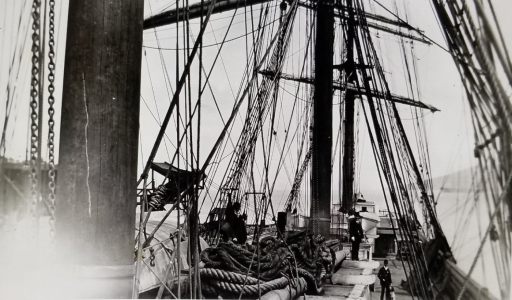

I'd like to know as well. I have never seen a deckhouse with large skylights atop it. Ample light is collected from the side windows. Skylights are needed when there is no other source of light, but by it. Like a cabin or dining cabin within the hull.It would be interesting to know which sources he developed this deck arrangement from.






Roger,Back in the 1930’s there was heightened interest in ship modeling. There were a number of reasons for this. Popular Mechanics magazine offered serialized articles for building several models including Flying Cloud. Howard Chapelle was beginning his long career, with serialized articles in Yachting Magazine and publication of The History of American Sailing Ships, and finally E. Armitage McCann published his model building books including one on McKay’s Sovereign of the Seas.
A contributing factor was undoubtedly the depression. Ship models could be built by people with a workbench and basic hand tools. Hulls were carved from laminated pine blocks; each lamination (aka Lifts) sawed out to a waterline shape from the lines drawing. Kits only furnished these lifts. It was up to the builder to glue them together and shape the hull. No POB construction! Fittings could be bought little by little as needed. The market responded to this. A. J. Fisher offered the Cadillac of ship model kits. Beautiful brass fittings; some sold with an oxidized black finish, real boxwood ladders and blocks.
Unfortunately research wasn’t what it is today. As a Naval Architect, Chapelle was primarily interested in tracing the threads in American Ship and Boat building history. While he did this masterfully, he was most interested in hull forms, not fine details. Likewise subsequent offerings prior, to Crothers excellent books focused on the characteristics of the different ships and how they affected their, performance. Not always correctly! Chapelle’s The Search For Speed Under Sail published in 1968 or ‘69 IMHO does a good job of analyzing what is and isn’t known about the factors that make sailing ships fast. He does include anq appendix, that includes contemporary articles from Griffith’s’ Nautical Magazine, but subjects do not include Flying Cloud. And, of course, the internet has made available a huge amount of information not used by earlier researchers like Chapelle.
All of this is is a long winded way of saying than I wouldn’t rely too heavily on your A.J. Fisher plans. It would also be interesting to know when they were last updated.
Roger

